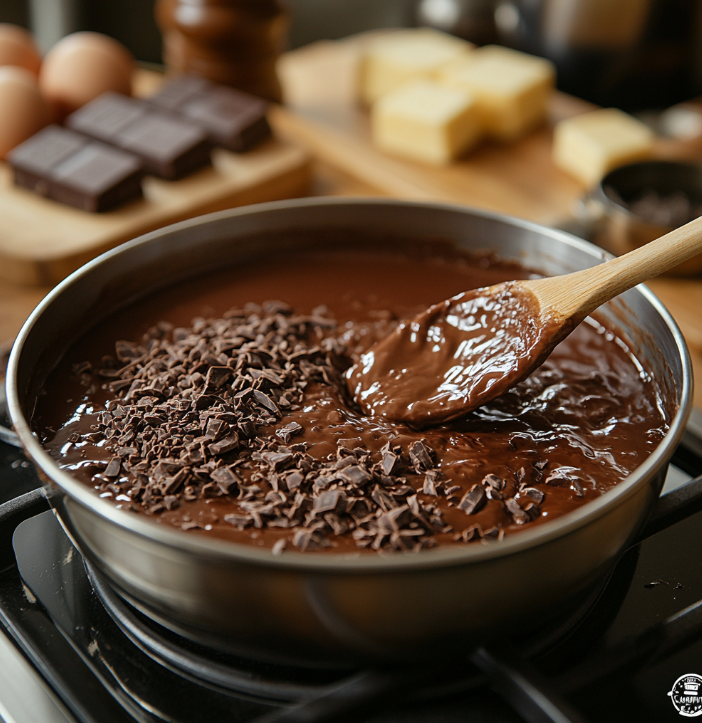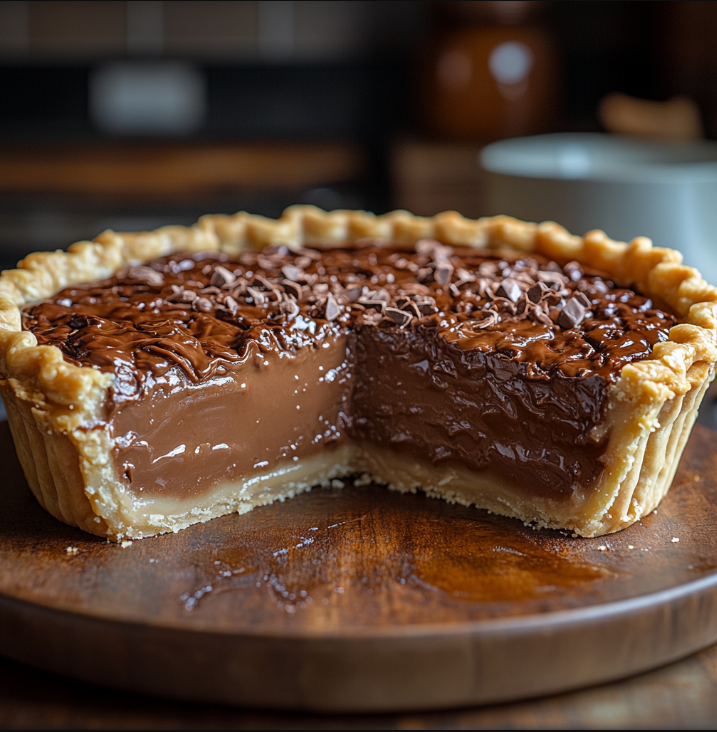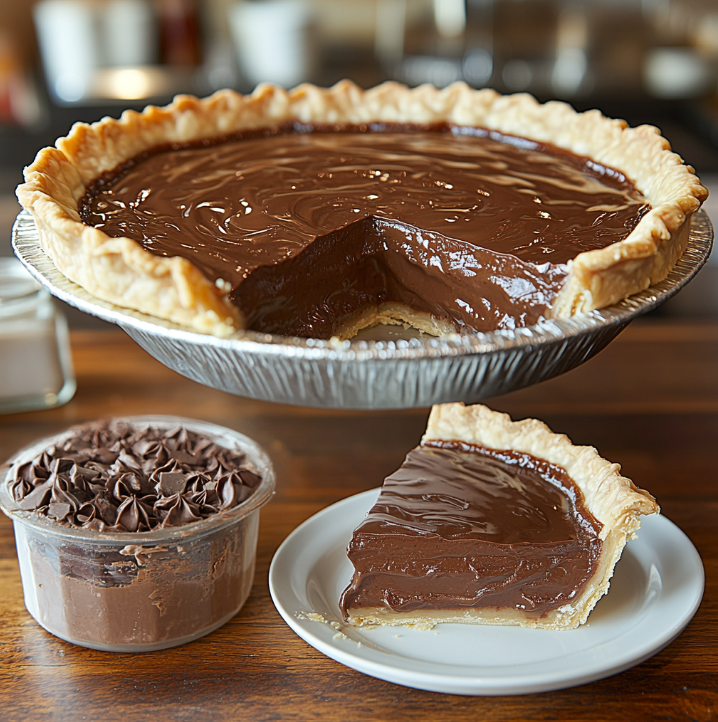Making the perfect chocolate pie can be a rewarding experience, but it’s frustrating when the filling turns watery after all your hard work. There are several reasons why your pie might not be setting properly, ranging from cooking techniques to environmental factors. In this article, we’ll dive into why chocolate pies get watery and how you can prevent this from happening.
The Science Behind Chocolate Pie Filling
The creamy, rich filling of a chocolate pie often relies on ingredients like cornstarch and egg yolks to achieve the desired thick consistency. When these ingredients aren’t combined or cooked properly, the filling may not set, leading to a watery texture.
Another critical factor is the cooking time. The filling needs to be heated long enough for the cornstarch or other thickeners to activate, ensuring it firms up when cooled. A rushed process could lead to a watery pie. To learn more about pie thickening methods, you can read this comprehensive guide on how to thicken coconut cream pie filling, which applies to other pies as well.
In addition, environmental factors like humidity can affect the consistency of your pie filling. High moisture in the air can cause the filling to absorb more water, making it harder for the pie to set correctly. For more tips on maintaining the proper consistency in pies, check out the chocolate pie recipe for techniques that work in different kitchen environments.
Common Causes of Watery Chocolate Pie
Here are some common reasons why your chocolate pie might become watery:
1. Undercooked Filling
- One of the main reasons for a watery chocolate pie is undercooking. The filling needs enough time on the stove for the cornstarch and eggs to properly thicken. Removing it too early can leave you with a runny texture.
2. Incorrect Use of Thickening Agents
- Using too little cornstarch or flour can prevent the filling from setting. Always stick to the recipe’s measurements, and if your pie consistently turns out watery, consider increasing the amount of thickener slightly.
3. Humidity and Weather Conditions
- Baking on humid days introduces excess moisture into the pie, which can prevent it from setting. This is particularly problematic with meringue-topped pies. If you’re having trouble with humidity affecting your pie, you may want to look into ways to control environmental factors, as discussed in the article why does my coconut cream pie get watery.
4. Improper Mixing or Use of Eggs
- Over-beating eggs or using old eggs can cause the pie filling to become watery. Eggs play a critical role in setting the filling, and improper handling can lead to inconsistent results.
How to Prevent a Watery Chocolate Pie

Avoiding a watery pie requires some attention to detail, but it’s definitely achievable. Here are some steps to follow:
1. Cook the Filling Long Enough
- Make sure to cook the filling until it thickens enough to coat the back of a spoon. This usually takes several minutes of continuous stirring over medium heat.
2. Use the Right Amount of Thickener
- Stick to the recommended amount of cornstarch or flour. If your pie consistently comes out watery, try increasing the ratio slightly, but avoid overdoing it, as too much thickener can make the pie grainy.
3. Allow the Pie to Cool Properly
- After cooking, it’s crucial to let the pie cool completely in the refrigerator for at least 4 hours. The cooling process helps the filling firm up, so cutting the pie too soon may result in a watery slice.
4. Consider Weather Conditions
- If you live in a humid area, it’s important to control the environment where the pie is setting. You can store the pie in a cooler, drier place to help it set properly.
Step-by-Step Guide to Fixing a Watery Chocolate Pie
If your pie has already turned out watery, don’t panic! There are a few ways to save it:
- Reheat the Filling: If the pie filling didn’t set, remove it from the crust and reheat it on the stove. Stir the filling continuously until it thickens, then return it to the crust and let it cool again.
- Add More Thickener: Create a slurry by mixing cornstarch or flour with a bit of water, and whisk it into the filling while reheating. This will help thicken the mixture.
- Chill the Pie Longer: Sometimes, the pie just needs more time to set. If it’s only slightly watery, try refrigerating it for a longer period, up to 24 hours.
Ingredient Substitutions for Better Results

If your pie still isn’t setting properly, consider making these ingredient substitutions:
- Increase Egg Yolks: Adding more egg yolks can help thicken the filling. The extra fat from the yolks helps create a firmer texture.
- Switch to Flour Instead of Cornstarch: If cornstarch isn’t giving you the results you want, try using flour. Flour creates a more stable structure and can help prevent a watery filling.
- Add Gelatin for Extra Firmness: You can incorporate gelatin into the filling to ensure it sets properly. This is especially useful if you’re making a pie in a humid environment.
FAQs
1. Why is my chocolate cream pie runny?
A runny chocolate cream pie is often the result of undercooking or using too little cornstarch. Ensure the filling has time to cook thoroughly and use the correct ratio of thickener.
2. How can I thicken my pie filling?
To thicken your pie filling, increase the amount of cornstarch, cook the filling longer, or add extra egg yolks to create a firmer texture.
3. Why does my pie filling separate from the crust?
Improper cooling can cause the filling to separate from the crust. Let the pie cool completely before slicing to avoid this issue.
4. Can I reduce sugar to prevent a watery pie?
While reducing sugar can help slightly, the main focus should be on cooking the filling properly and using the correct amount of thickening agents.
5. How should I store my chocolate pie to avoid weeping?
To prevent weeping, especially in meringue-topped pies, store the pie in a cool, dry place or refrigerate it.
Conclusion
A watery chocolate pie is a common baking issue, but it’s easy to avoid with the right techniques. By focusing on cooking the filling properly, using the correct amounts of thickening agents, and accounting for environmental factors, you can achieve a perfectly set pie. For more tips on making the perfect pie, take a look at the difference between chocolate pie and chocolate cake to understand how different recipes can affect the consistency of your dessert.

